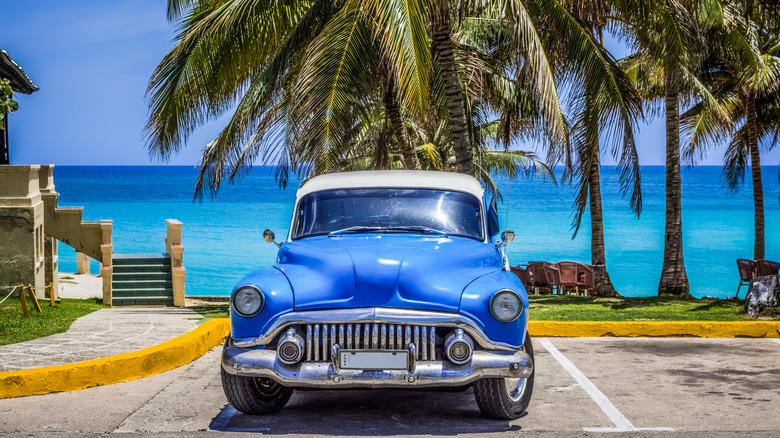The Reason Old Cars All Had The Same Headlights
Today's advanced LED headlights are so blindingly bright that they could maybe be seen from space, but that wasn't always the case. Like most things associated with the automobile, the many accessories, features, and components have changed dramatically since the first car was introduced in the late 1880s.
Despite the invention of the electric headlamp in 1898, proper headlights weren't introduced to automobiles because it was expensive, and the technology wasn't adequate enough to make a long-lasting product. Thus, cars continued to use kerosene oil and later acetylene gas headlamps (via The Retrofit Source).
Automakers didn't begin to put electric headlamps into cars as standard equipment until 1911, and Cadillac introduced a "modern electrical system" that included headlights in 1912. The following year, Henry Ford's Model T hit the roads in mass, but even those didn't come with headlights until 1919.
In 1915 Massachusetts became the first state to implement regulations surrounding the direction and distance of a car's headlight beam. Three years later, the Illuminating Engineering Society (IES) and the Society of Automotive Engineers (SAE) got together to specify precisely how headlights needed to perform, and in 1921 the first federal standards were implemented (via The Retrofit Source).
Let there be light
Over the next few decades, America changed. The automobile became more commonplace, cities grew, and the "suburbs" became a thing. People went from driving in the city, to driving on rural roads at night where street lighting wasn't available. Thus, headlights became far more critical. During that time, all manner of headlight innovations sprung up, without standardization. Finding a replacement lamp during this era was impossible, until a paradigm shift occurred.
In 1939, the sealed beam headlight was created. It consisted of a tungsten filament bulb soldered into the middle of a metal reflector, with a glass lens fastened to the front. It was basically an "evacuated glass envelope" that could better narrow the light into a focused beam. It quickly became the de facto headlight design, because the following year, the federal government mandated that all new vehicles sold in the United States needed to have two 7-inch, sealed beam headlights. For the next 17 years, every car, bus, and truck made used the same round 7-inch headlights, which (accidentally) stagnated car designs for almost two decades (via 1000Bulbs).
The law wasn't changed until 1957, and only then did the government allow the use of four round, sealed beam headlights instead of just two — with each of those having a smaller 5 3/4-inch diameter. One acted as a dual filament lamp like the original, while the second came with a single high-intensity filament for high-beam use.
Rectangle headlights weren't introduced until the 1970s. However, they were still the same sealed beam headlights (via Technology Connections), which remained the status quo until 1984 when the Ford Lincoln Mark VII became the first car to use the new and differently shaped aero lights.
